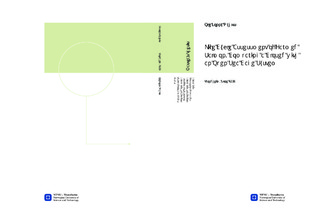| dc.description.abstract | Ole Jonny Nyhus, Marine Technology, Norwegian University of Science and Technology.Abstract of Master's Thesis, levert 8. juni, 2014:Life Cycle Assessment of Farmed Salmon, Comparing a Closed with an Open Sea Cage System.The goal of this Master's Thesis is to do a Life Cycle Assessment (LCA) on a closed fish farm system and compare it to an open fish farm system, for so to make recommendations based on the results.Life Cycle Assessment is a method to calculate the environmental impacts that comes from producing a product or a service. In this case the product is one tonne of salmon at farm gate. We compare this with the impacts from producing one tonne at an open fish farm.In the first part of the thesis we describe the reasons for carrying out the LCA, and the theory used. Closed fish farm systems might be the solution to the salmon lice problem the industry is facing, the developer Akvafuture in Brønnøysund is developing such a system, and the have agreed to deliver numbers for use in the LCA. These and numbers from big actors in the industry makes up the data used in the LCA. The foreground processes included in the study is smolt and feed production, smolt and feed transport, and the fish farm. The categories covered in the study is climate change, terrestrial acidification, freshwater eutrophication, and marine ecotoxicity.The LCA showed that the closed system used alot more electric energy than the open system, this mainly from pumps and production of oxygen. This makes the impacts from the closed system sensitive to changes in impacts from the electric energy, it is therefore important to know what power is used on the fish farm. For farms in Norway this have little impacts due to the clean energy from Norwegian hydro power, but it increases for the climate and acidification category when the energy gets dirtier, e.g. by using Eurpean electricity mix.The feed production is by far the most contributing process in all four categories. For freshwater eutrophication and marine ecotoxicity the contribution is almost a hundred percent of the impacts.In conclusion we can see that for use in Norwegian waters and with Norwegian el-mix, the closed fish farm system is a environmentally good alternative to open fish farm systems when looking on the categories in this LCA. I can be argued that closed systems have other positive aspects like no lice, better feed factor, healthier fish and more, but has yet to be shown, and the closed systems have much yet to prove. It should be noted this LCA used data from early testing, and for that period the salmon was lice free. | nb_NO |

